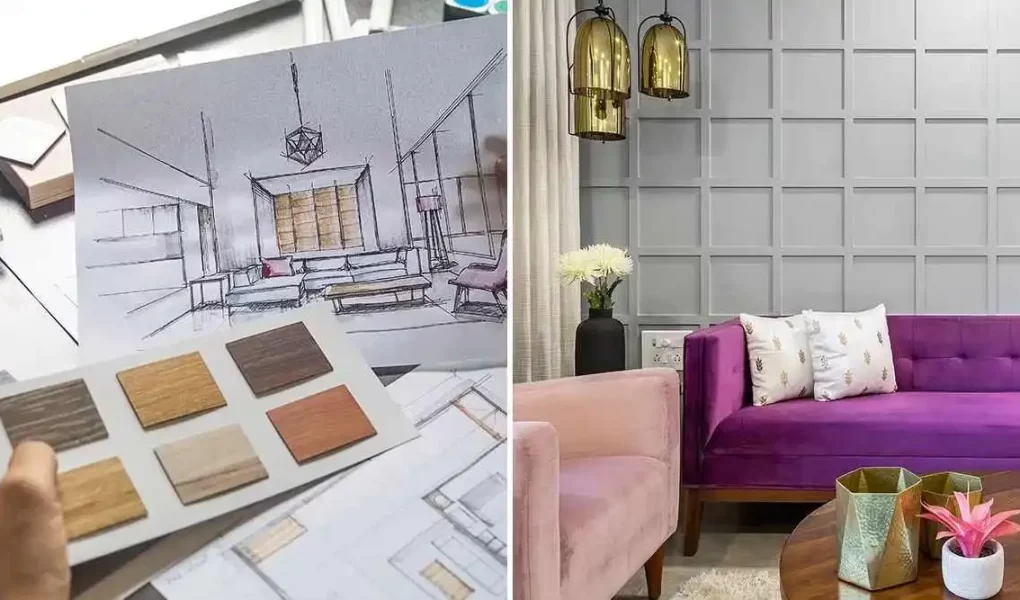As the world of design continues to evolve, it’s crucial to understand the distinction between Interior Designer and an Interior Architect. This article aims to shed light on the differences between these two professions, emphasizing the importance of recognizing their unique roles in the design industry. By the end of this comprehensive guide, you’ll have a clear understanding of the specific responsibilities, educational backgrounds, key differences, career opportunities, and case studies in each field, ultimately empowering you to make informed decisions when seeking professional design services.
Definitions
What is an Interior Designer?

Interior designers specialize in creating aesthetically pleasing and functional living or working spaces. Their responsibilities encompass conceptualizing, planning, and executing design schemes while considering the client’s requirements and preferences. With a keen eye for detail, interior designers transform interior spaces, often focusing on color schemes, furniture selection, and decorative elements. Their skills include spatial planning, creative problem-solving, and a deep understanding of design principles. Typical projects handled by interior designers range from residential homes to commercial spaces, including offices, restaurants, and retail establishments.
What is an Interior Architect?

Interior architects, on the other hand, blend design and structural considerations to create spaces that are not only visually appealing but also structurally sound. Their role involves integrating architecture and interior design, ensuring that the interior spaces harmonize with the overall architectural design of a building. Interior architects possess a strong understanding of building codes, material properties, and spatial functionality. They are responsible for creating detailed plans that may involve structural modifications, lighting design, and the integration of building systems. Their projects often include renovations, adaptive reuse, and new construction, where they collaborate closely with architects, engineers, and contractors.
Educational Background

Education for Interior Designers
To pursue a career in interior design, individuals typically seek a bachelor’s degree in interior design or a related field. Some states require interior designers to obtain licensure, which may involve passing the National Council for Interior Design Qualification (NCIDQ) exam. Continuing education opportunities, such as workshops and seminars, allow interior designers to stay updated with the latest design trends and technologies.
Education for Interior Architects

Interior Architect typically hold a degree in architecture or a related discipline, often followed by a master’s degree in interior architecture or a similar program. Similar to interior designers, licensure requirements vary by state and may involve examinations and practical experience. Continuing education is essential for interior architects to stay abreast of building codes, sustainable design practices, and technological advancements in the field.
Key Differences

Scope of Work
The primary difference lies in the scope of work undertaken by interior designers and interior architects. Interior designers focus on the aesthetic and functional aspects of interior spaces, emphasizing furniture arrangement, color schemes, and decorative elements, while interior architects integrate structural elements and building systems into their designs, ensuring that interior spaces align with the architectural framework.
Regulatory and Legal Aspects
Licensing requirements for interior designers and interior architects vary by state and country. Interior designers may require licensure to practice in some regions, particularly when working on public projects or projects that involve health and safety considerations. Interior architects, due to their involvement in structural modifications and building systems, often navigate a more complex regulatory landscape, requiring a deeper understanding of building codes and construction regulations.
Design Philosophy and Approach

Interior designers approach projects with a focus on aesthetics, human experience, and spatial functionality. Their creative process revolves around enhancing the visual and sensory aspects of interior spaces. In contrast, interior architects adopt a comprehensive approach that integrates architectural and interior design principles. They collaborate closely with architects, engineers, and contractors to ensure that the interior spaces align with the structural and mechanical aspects of a building.
Career Opportunities

Job Market for Interior Designers
Interior Designers find employment opportunities in various sectors, including design firms, architectural practices, and real estate development companies. Career advancement options may include senior design positions, project management roles, or establishing independent design consultancies.
Job Market for Interior Architects
Interior Architect often work in architectural firms, interior design studios, or collaborate with construction companies. Their career paths may lead to roles as lead interior architects, design directors, or project architects, overseeing the interior components of large-scale architectural projects.




